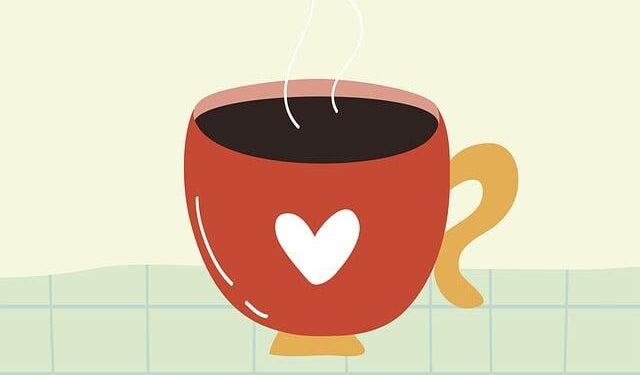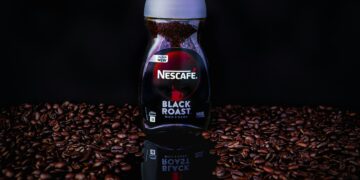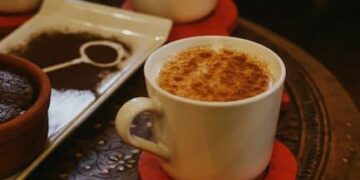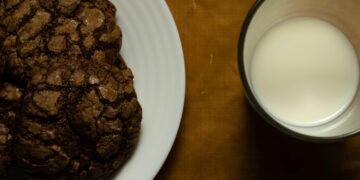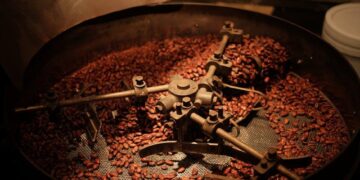Table of Contents
Introduction: A Bitter Feud
For most of my adult life, my relationship with coffee has been a bitter feud.
It was a classic love-hate affair, a daily drama played out in my favorite ceramic mug.
I adored the idea of coffee.
I loved the ritual: the rhythmic whir of the grinder, the earthy bloom of the grounds as hot water first hit them, the comforting weight of a warm cup in my hands.
The aroma alone was a promise of civilization, a fragrant signal that the day could officially begin.
But the reality, for me, was always a betrayal.
The first sip was a jolt, and not in a good Way. It was a sharp, acidic assault on my palate, a bitterness that clung to my tongue long after the cup was empty.
This was followed, almost invariably, by the afternoon regret: a low-grade, acidic churning in my stomach that served as a constant, unpleasant reminder of my morning indulgence.
It felt less like a gentle awakening and more like a chemical declaration of war.
I spent years trying to broker a peace treaty.
My kitchen counter became a graveyard of failed experiments.
I cycled through countless bags of beans from different origins, deluding myself that the perfect, non-aggressive roast was just one purchase away.
I tried to tame the beast with cream and sugar, but this felt like a capitulation, masking the coffee’s inherent harshness under a cloying blanket of calories and trans fats.
I experimented with every conceivable hot-brewing gadget: drip machines that promised optimal extraction, French presses that yielded a full-bodied but often gritty brew, and pour-over cones that demanded a surgeon’s precision.
Each method, regardless of its complexity or cost, produced a variation on the same theme: a beverage that my senses craved but my body rejected.
I didn’t understand it then, but I was fighting the wrong enemy.
I thought my battle was with the bean, but it was actually with the brew.
My real antagonist was heat.
The conventional wisdom of coffee making dictates a precise and unforgiving temperature window, typically between 195°F and 205°F (about 90°C to 96°C).
Veer too hot, and you scorch the grounds, over-extracting compounds that create a harsh, burnt bitterness.
Brew too cool, and you under-extract, resulting in a cup that is disappointingly weak and sour.
This delicate dance is a constant source of frustration for home brewers, where cheap machines often fail to reach the right temperature and even the most diligent enthusiast can miss the mark.
I was unknowingly subjecting my coffee to a violent, high-temperature interrogation, forcing it to give up its secrets in a matter of minutes.
The resulting cup was a reflection of that aggression: sharp, acidic, and fundamentally unbalanced.
Chapter 1: The Cold Shoulder
My first taste of victory came, ironically, on a sweltering summer afternoon.
I had given up on my morning ritual for the day, unwilling to face another round of acidic combat.
Seeking refuge in a local café, I noticed “cold brew” on the menu.
It was different from the watery, sad iced coffee I’d had before, which was usually just leftover drip coffee poured over i.e. Intrigued, I ordered a cup.
The revelation was immediate and profound.
The liquid was smooth, almost velvety, with a deep, rounded flavor.
The aggressive, acidic bite I associated with coffee was gone, replaced by a mellow sweetness and rich notes of chocolate.
It was full-bodied without being heavy, and complex without being harsh.
Most importantly, as I finished the glass, I waited for the familiar churn of regret, but it never came.
This coffee was gentle, not just on the palate, but on my stomach.
Research would later confirm my experience: the cold brew process can result in a beverage that is up to 66% less acidic than its hot-brewed counterpart, making it a godsend for those with sensitive stomachs.
I fell down a rabbit hole of research, desperate to understand the magic I had just tasted.
The secret, I learned, wasn’t magic at all; it was chemistry.
Instead of using brute-force heat, cold brew uses the gentle, persistent power of time.
The process involves steeping coarse coffee grounds in cold or room-temperature water for an extended period, typically between 12 and 24 hours.
This slow, low-temperature infusion is far more selective than a hot-water extraction.
It patiently coaxes out the desirable flavor compounds—the natural sugars and lipids that contribute to sweetness and a smooth mouthfeel—while leaving many of the undesirable ones behind in the grounds.1
The science backs this up.
High heat rapidly extracts chlorogenic acids (CGAs) and accelerates their degradation into quinic and caffeic acids, which are primary culprits behind bitterness and perceived acidity.1
Cold water, in contrast, extracts fewer of these acids and slows their breakdown.
Rigorous sensory analysis conducted at the UC Davis Coffee Center confirmed that when compared to chilled hot-brewed coffee, cold brew is consistently perceived as less bitter, less sour, and more floral.2
I had found a method that honored the coffee bean instead of assaulting it.
My war, it seemed, was over.
I bought a simple cold brew maker and enjoyed a blissful summer of smooth, delicious coffee.
But then, the seasons turned.
As autumn leaves fell and a chill entered the air, my craving for a cold glass of coffee vanished.
I yearned for the comfort and warmth of a hot mug, a feeling shared by many who switch to hot drinks when the weather cools.
I found myself in a new predicament, a frustrating seasonal standoff.
I could have the perfect flavor, but it was cold.
Or I could have the comforting warmth, but it was bitter.
The solution felt incomplete, forcing me to choose between flavor and the deep, primal satisfaction of a hot beverage on a cold day.
My peace treaty had failed to account for winter.
Chapter 2: An Epiphany in a Perfume Bottle
The solution to my dilemma arrived not from the world of coffee, but from the far more fragrant realm of perfumery.
One evening, while falling down an internet rabbit hole, I found myself reading about the creation of artisanal fragrances.
It was there that I encountered a word that would change my relationship with coffee forever: maceration.
In perfumery, maceration is the art of aging and maturing a fragrance concentrate.
When a perfumer first blends various essential oils and aromatic compounds with a solvent, typically alcohol, the result can be chaotic and harsh.
The individual notes clash, and the sharp scent of alcohol can dominate.
Maceration is the period of patient waiting, lasting from weeks to many months, during which these volatile molecules are allowed to settle, interact, and truly marry one another.
It is a slow, gentle process of harmonization.
The sharp edges soften, the notes meld into a unified and complex accord, and the fragrance gains depth, stability, and longevity.
Maceration is not about force; it is about allowing time to refine and perfect the blend.
A jolt of recognition shot through me.
This was it.
This was the philosophical framework I had been missing.
I realized that hot brewing is a chemical shout.
It is the antithesis of maceration.
It’s like trying to create a fine perfume by boiling a bouquet of jasmine and a block of sandalwood in a P.T. The process is fast, violent, and indiscriminate.
The intense heat would obliterate the delicate floral notes, warp the woody base, and produce a burnt, acrid mess.
This is precisely what scalding water does to coffee grounds.
It aggressively rips compounds from the bean, creating a cacophony of flavors, including the harsh, bitter notes that are the byproduct of heat-induced chemical degradation.
Cold brewing, I now understood, is a chemical whisper.
It is the coffee equivalent of maceration.
In this process, time and cool water act as a gentle solvent, patiently persuading the coffee grounds to release their most desirable elements.
It coaxes out the sweet sugars and the smooth oils, allowing them to infuse the water and integrate into a harmonious, stable concentrate.
It leaves the majority of the sharp, bitter-tasting acids behind, much like maceration mellows the initial harshness of a newly blended perfume.1
It’s a process that values finesse over force, patience over speed.
My entire perspective shifted.
I was no longer just making a beverage; I was overseeing an extraction, and I now had a choice between two fundamentally different philosophies.
Table 1: Hot vs. Cold Extraction: A Tale of Two Philosophies
| Feature | Hot Extraction (The Brute Force Method) | Cold Extraction (The Maceration Method) |
| Energy Source | High Thermal Energy (Heat: 195-205°F / 90-96°C) | Time (12-24 hours) & Low Thermal Energy (Cold/Room Temp) |
| Process Speed | Fast & Aggressive (Minutes) | Slow & Patient (Hours) |
| Chemical Effect | Indiscriminate, rapid dissolution. Degrades delicate compounds (e.g., chlorogenic acids into bitter quinic acid). Extracts more volatile, acidic, and bitter compounds.1 | Selective, gentle infusion. Preserves delicate compounds and natural sugars. Extracts fewer acids and bitter compounds, but more oils for a smoother body.1 |
| Resulting Profile | Higher acidity, more bitterness, potentially astringent. Can be complex but often harsh.2 | Lower acidity, less bitterness, smoother, sweeter, fuller body. Mellow and rounded.2 |
| Guiding Principle | Speed and Power | Patience and Finesse |
| Perfume Analogy | Trying to create a fragrance by boiling flowers and oils—a destructive, chaotic process that yields a burnt, harsh scent. | Maceration: Allowing fragrance oils to slowly marry and mature in a solvent over weeks, creating a harmonious, stable, and complex perfume. |
Chapter 3: Mastering the Maceration
Armed with this new philosophy, I returned to my kitchen not as a frustrated consumer, but as an aspiring craftsman.
My goal was no longer just to make coffee, but to create a perfect, “macerated” concentrate that could serve as the base for any drink I desired, hot or cold.
This journey from theory to practice was its own education, a process of navigating the key variables that separate a mediocre brew from a sublime one.
My first attempt was humble.
I took a large Mason jar, a simple vessel that has served countless home brewers, and combined my coffee grounds with water.
But I quickly learned that while the concept of cold brew is forgiving, achieving excellence requires attention to detail.
I had to pass through the brewer’s gauntlet, confronting the common mistakes that plague so many at-home efforts.3
The Brewer’s Gauntlet – Navigating the Variables
- The Grind is Everything: My first major lesson was in texture. The success of a cold brew maceration hinges on a coarse grind. On one early attempt, I used a grind that was too fine, closer to what I’d use for a drip machine. The result was a disaster. The fine particles clumped together, preventing even water saturation, and the final brew was both bitter from over-extraction and a nightmare to filter, leaving a muddy sludge at the bottom of my cup. The ideal grind should resemble coarse cornmeal or rough sea salt. This allows the water to penetrate and circulate freely, ensuring a gentle and even extraction. This also highlighted the importance of a quality burr grinder, which crushes beans into a uniform size, over a blade grinder, which erratically chops them into a mix of dust and boulders.
- The Golden Ratio: My next challenge was proportion. Early on, I was just eyeballing my measurements, a cardinal sin in any process that is, at its heart, a science. The coffee-to-water ratio is critical for controlling the strength of your final product. I learned to distinguish between a ready-to-drink ratio, which is lighter (typically around 1 part coffee to 8-16 parts water by weight), and a concentrate ratio (a much stronger 1:4 or 1:5). Making a concentrate proved to be the key, as it provides the versatility to dilute to your exact preference and is essential for making hot cold brew without it becoming lukewarm and weak. This is where a simple digital kitchen scale became my most valuable tool, replacing imprecise scoops and ensuring perfect consistency every time.3
- Water, The Unseen Ingredient: I had always scoffed at the idea that water could make a significant difference, but a side-by-side test proved me wrong. A batch made with tap water tasted faintly of chlorine, a dull, flat note that muted the coffee’s richer flavors. A batch made with simple filtered water was cleaner, sweeter, and more vibrant. Given that the coffee would be steeping in this water for nearly a day, any impurities in the water would have ample time to taint the final product.3 Using filtered water became a non-negotiable rule.
- Bean Selection & Freshness: The maceration philosophy also informed my choice of beans. While it’s true that the gentle cold brew process is forgiving and can make even older, less-than-perfect beans taste palatable, it stands to reason that starting with superior ingredients yields a superior result. I found that medium-to-dark roasts excelled in this method. Their inherent notes of chocolate, nuts, and caramel are beautifully amplified by the slow steep, whereas the bright, sharp acidity of some very light roasts can become muted and lost. Most importantly, I learned the lesson of freshness. A bag of stale, pre-ground beans from the supermarket simply cannot compare to freshly roasted beans that are ground just moments before brewing. Oxidation is the enemy of flavor, and using fresh beans is the first line of defense.
- Time & Temperature: Finally, I perfected the art of patience. I experimented with steeping on the counter versus in the refrigerator. While steeping at room temperature is faster, I found that a long, slow steep in the fridge (typically 18-24 hours) produced a more refined, nuanced flavor and had the added benefit of inhibiting any potential bacterial growth. I also learned that there is such a thing as too much patience. Pushing the steep time beyond 24-30 hours can begin to extract unpleasant woody and earthy flavors, a sign that the gentle maceration has crossed into over-extraction.
After several batches, I had a system.
I had my coarse grind, my 1:4 ratio measured by weight, my filtered water, and my 20-hour steep in the fridge.
The final step was a careful strain through a fine-mesh sieve lined with cheesecloth, which produced a crystal-clear, rich, and potent concentrate.
I had mastered the maceration.
Table 2: The Brewer’s Compass: Troubleshooting Your Cold Brew Concentrate
| Problem | Likely Cause(s) | Solution(s) |
| My cold brew tastes weak or sour. | 1. Under-extraction. 2. Grind is too coarse. 3. Steep time was too short. 4. Coffee-to-water ratio was too low (too much water). | 1. Increase steep time (try 18-20 hours in the fridge). 2. Use a slightly finer grind (but still coarse, not powdery). 3. Increase the amount of coffee grounds for your ratio. Use a scale for accuracy. |
| My cold brew tastes bitter or woody. | 1. Over-extraction. 2. Grind is too fine. 3. Steep time was too long (e.g., > 24 hours). | 1. Decrease steep time (stick to the 12-24 hour window). 2. Use a coarser grind. 3. Ensure you’re not using a very dark, oily roast that is prone to bitterness. |
| My cold brew is muddy or gritty. | 1. Grind is too fine, creating “fines” that pass through the filter. 2. Inadequate filtering method. | 1. Use a consistent, coarse grind from a burr grinder. 2. Filter through a finer medium. Use a double layer of cheesecloth or a paper coffee filter inside a sieve. |
| My cold brew tastes flat or “off.” | 1. Stale coffee beans. 2. Poor quality water (e.g., tap water). | 1. Use freshly roasted beans, grinding them just before brewing.2. Use filtered or bottled water for a cleaner taste.3 |
Chapter 4: The Gentle Re-Awakening: Applying the Heat
With a jar of perfectly “macerated” cold brew concentrate sitting in my fridge, I had reached the final, crucial stage of my quest.
The challenge was simple but profound: how to introduce warmth without re-introducing violence? How to heat this carefully crafted liquid without destroying the very qualities I had worked so patiently to create? The ghost of coffees past—specifically, the acrid taste of day-old drip coffee reheated in a microwave—haunted me.
I knew that a careless application of heat could undo everything.
The perfumer’s analogy was my guide.
Having spent weeks allowing a fragrance to mature, a perfumer would never dream of sticking it in an oven.
The same principle had to apply here.
Aggressive heating methods were my enemy.
Pouring my precious concentrate into a screaming-hot electric kettle risked scorching it on the heating coils, creating a burnt, undrinkable mess.4
Microwaving was even worse; its uneven, chaotic energy would effectively “re-cook” the coffee, re-introducing the harshness I had so carefully avoided.
Both methods would betray the philosophy of gentle extraction.
Through a flurry of reading online forums and articles, I discovered that the community of hot cold brew drinkers had already found the answer.
The solution lay in controlled, gentle warming.
There are two primary methods that respect the integrity of the concentrate.4
The first, and by far the best, is the Dilution Method.
Its elegance lies in its simplicity.
Instead of heating the coffee, you heat the water.
I would bring a kettle of filtered water to just off a boil, then pour a portion of my cold brew concentrate into my mug.
Then, I would add the hot water to the concentrate.
A typical ratio is about 2 or 3 parts hot water to 1 part concentrate, but this is entirely adjustable to personal taste.
The hot water gently raises the temperature of the entire drink to a perfect, comforting warmth without ever subjecting the delicate concentrate itself to direct, high heat.
It’s a gentle re-awakening, not a rude shock.
The second, for times when I might want to prepare more than one cup, is the Stovetop Method.
For this, I would first dilute my concentrate with cool water to my desired drinking strength in a small saucepan.
Then, I would place the saucepan on the stove over the lowest possible heat.
The key is to watch it carefully, warming it only until the first wisps of steam begin to rise from the surface, and then immediately removing it from the heat.
Boiling is strictly forbidden.
This method is slower and requires more attention, but it effectively warms the coffee without scorching it.
I chose the dilution method for my moment of truth.
I poured an ounce or two of the dark, rich concentrate into my favorite mug.
I heated my kettle and, with a sense of ceremony, poured the steaming water over the concentrate.
The aroma that rose to meet me was incredible—all the deep, chocolatey sweetness of the cold brew, now unlocked and airborne.
I took the first sip.
It was everything I had been searching for.
The flavor was smooth, round, and utterly devoid of the acidic bite that had plagued me for years.
The rich, mellow character of the cold brew was perfectly preserved.
But it was hot.
It was the warm, comforting, soul-soothing beverage I craved on a cold morning.
There was no compromise.
The smoothness of cold brew and the comfort of hot coffee, united in a single, perfect cup.
The war was finally over.
Conclusion: The Warm Embrace
My morning ritual is now a thing of peace.
Once a week, usually on a Sunday afternoon, I perform the simple, patient ritual of making a large batch of cold brew concentrate.
It sits in a sealed jar in my fridge, a reservoir of future satisfaction.
Each morning, the process of making my coffee takes less than a minute.
I pour a bit of concentrate, add hot water from the kettle, and I am rewarded with a consistently perfect cup.
There is no more guesswork, no more anxiety, no more bitter regret.
Coffee is no longer a source of conflict in my life; it is a source of pure, reliable pleasure.
This shift in my personal routine mirrors a larger trend in North American coffee culture.
As more of us seek to replicate the café experience at home, there’s a growing demand for methods that offer convenience without sacrificing quality.
The rise of specialty coffee, coffee subscriptions, and a desire for functional, better-for-you beverages has created a new generation of educated consumers who are willing to invest time and effort into their brew.
Hot cold brew fits perfectly into this modern landscape.
It is the ultimate convenience hack—brew once, enjoy for a week—that also happens to produce a demonstrably superior-tasting and gentler product.
My journey was about more than just finding a better way to make coffee.
It was a lesson in questioning assumptions—the assumption that hot coffee must be brewed with hot water, that speed is always a virtue, that a harsh taste is an unavoidable part of the experience.
The analogy of the perfumer’s craft taught me that sometimes, a gentler, more patient approach is not only preferable but essential for achieving true quality.
Maceration is a testament to the idea that the finest things are not shocked into existence but are allowed to mature gracefully.
For anyone who has fought their own battles with bitter coffee, who has longed for a cup that is both comforting and kind, I extend an invitation.
Embark on your own journey of discovery.
The process is simple, the ingredients are few, and the reward is immense.
You now have the story, the science, and the practical steps to end your own war.
You can finally have the best of both worlds: the sophisticated, smooth flavor of modern specialty coffee and the timeless, warm embrace of a perfect hot cup.
Works cited
- The Chemistry of Cold Brew Coffee vs. Hot Brewed Coffee …, accessed August 3, 2025, https://espressooutlet.com/blogs/news/the-chemistry-of-cold-brew-coffee-vs-hot-brewed-coffee
- Worth the Wait: How Cold Brew Differs from Chilled Hot Brew | 25 …, accessed August 3, 2025, https://sca.coffee/sca-news/25/issue-22/how-cold-brew-differs-from-chilled-hot-brew
- The Top 3 Mistakes Everyone Makes When Brewing Coffee at Home …, accessed August 3, 2025, https://www.eatingwell.com/the-mistake-everyone-makes-when-brewing-coffee-11702869
- What Happens If You Heat Up Cold-Brew Coffee? – Japanese …, accessed August 3, 2025, https://japanesecoffeeco.com/blogs/japanese-coffee-blog/what-happens-if-you-heat-up-cold-brew-coffee
